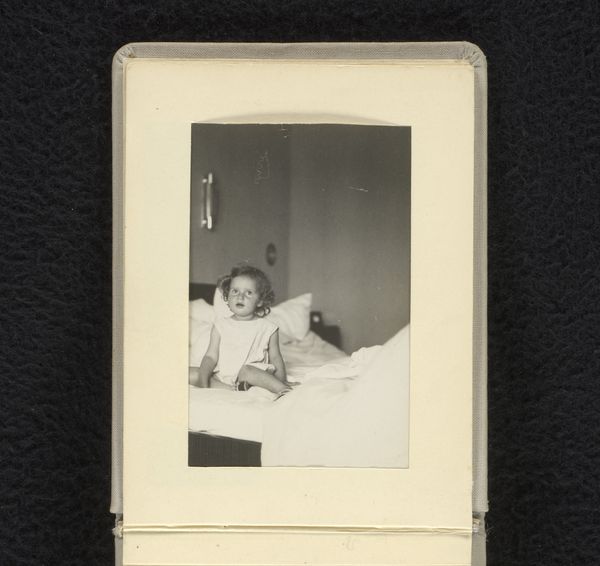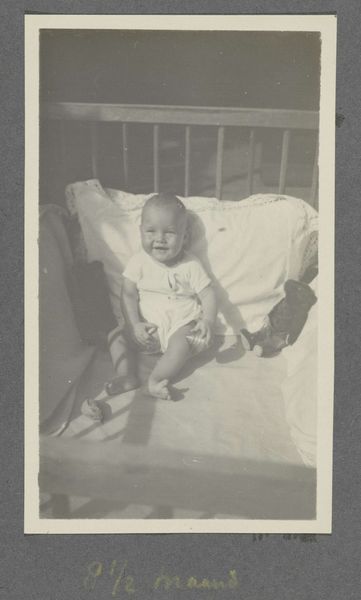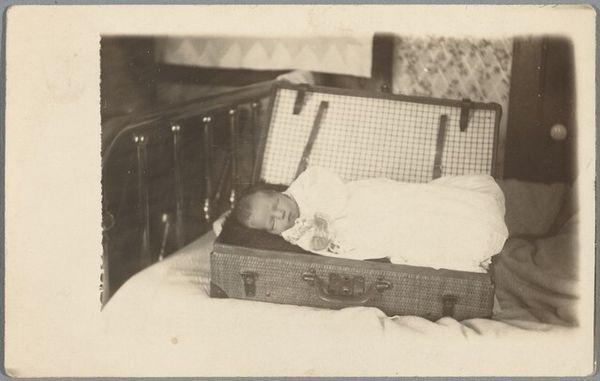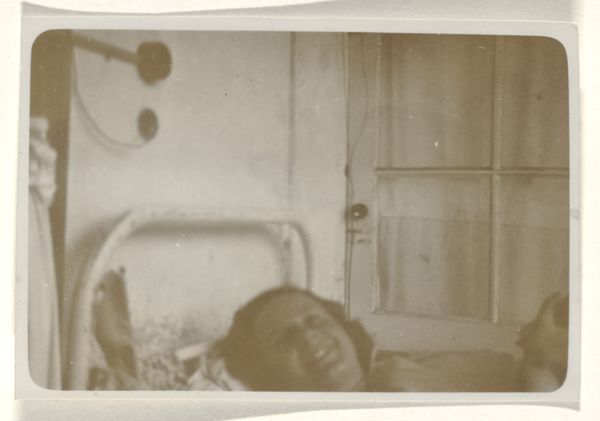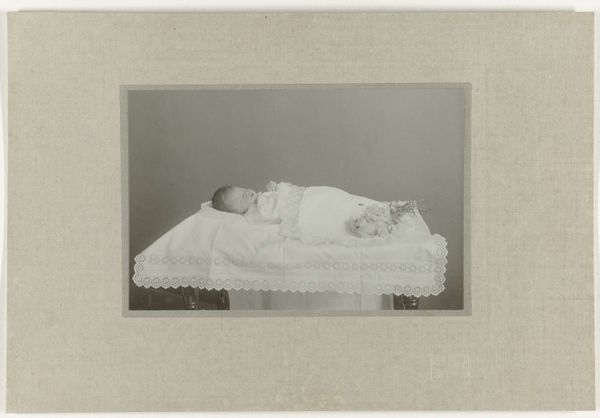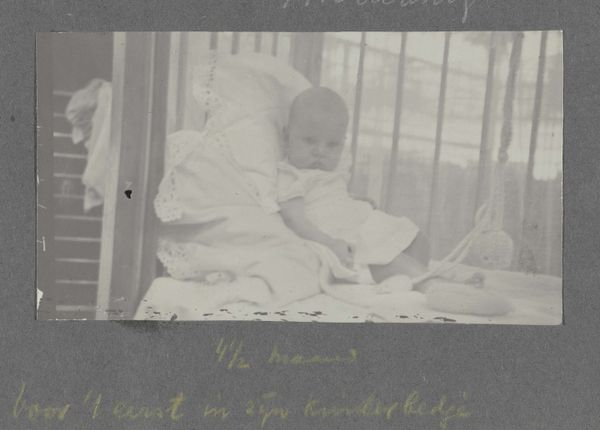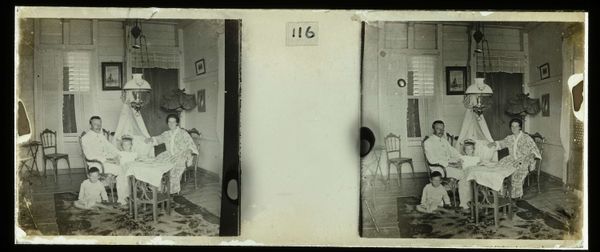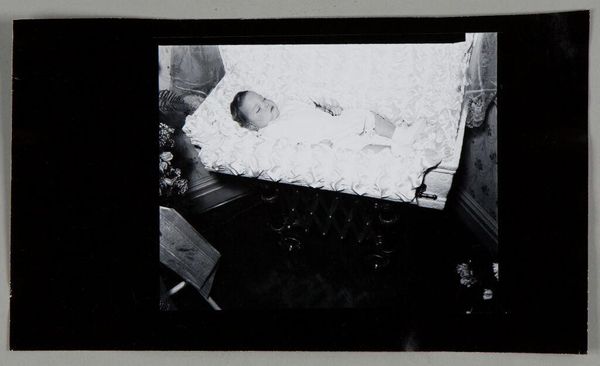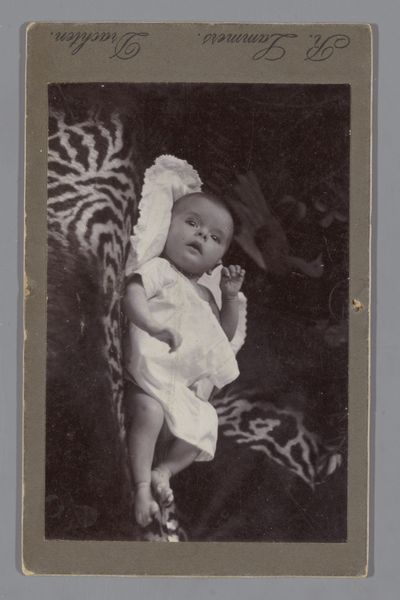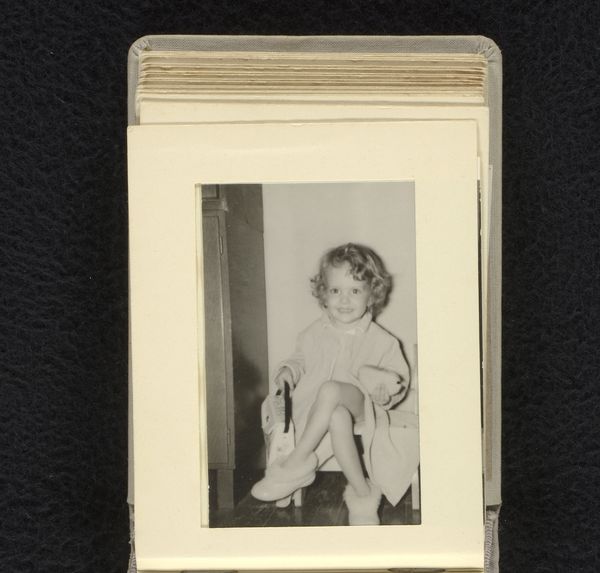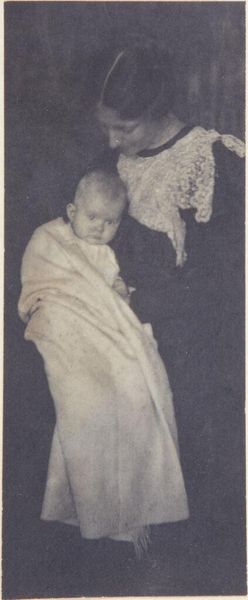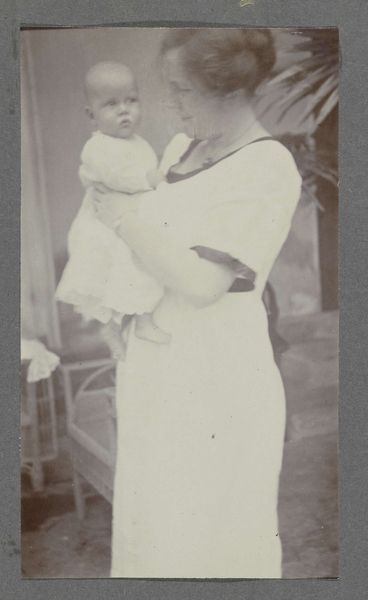
Gerard Brouwers, de pasgeboren zoon van Theodoor Brouwers 1913 - 1930
0:00
0:00
theodoorbrouwers
Rijksmuseum
photography, albumen-print
#
portrait
#
photography
#
albumen-print
#
realism
#
monochrome
Dimensions: height 4.5 cm, width 10.5 cm
Copyright: Rijks Museum: Open Domain
Curator: Immediately, there's an arresting sense of fragility to this monochrome image. The soft focus lends a dreamlike quality. Editor: This is a photograph by Theodoor Brouwers, likely taken sometime between 1913 and 1930. The albumen print is titled "Gerard Brouwers, de pasgeboren zoon van Theodoor Brouwers," so it appears to be a portrait of the artist’s newborn son. It resides here at the Rijksmuseum. Curator: The starkness of the black and white amplifies the vulnerability of the baby. Notice the contrast between the crisp, iron frame of the bed and the delicate limbs. There is the implied tenderness that often accompanies images of newborns but there's also, in the photographic realism, the implicit awareness of how brief and mutable early childhood can be. Editor: I am struck by the compositional elements. The strong horizontal of the bed is juxtaposed with the soft vertical fall of the sheets to the side of the crib and the bed's wrought-iron frame. Curator: Irony and expectation converge in the imagery of a child's bed and what it traditionally implies-- dreams and purity. Given the history we know now of infant mortality through time, it's difficult to not see an undercurrent of cultural memory here. Editor: The almost clinical presentation is very interesting, as well. One notices that Theodoor meticulously recorded details that one would maybe not initially look for; the light, shape of the head. The artist’s realism shows us something essential, beyond sentimental or performative gesture. Curator: Precisely. It shows a dedication to recording that specific moment, layering realism with the deep symbolic weight associated with infancy and paternal observation. Editor: Ultimately, whether intentional or not, Brouwers’ image uses the formal photographic method to hint at the fragile beauty of existence, as stark, but beautiful and inevitable as these lines. Curator: An astute reflection. By pairing his objective perspective of style, and his paternal one, Brouwers preserves in light what easily, inevitably, fades from memory.
Comments
No comments
Be the first to comment and join the conversation on the ultimate creative platform.
